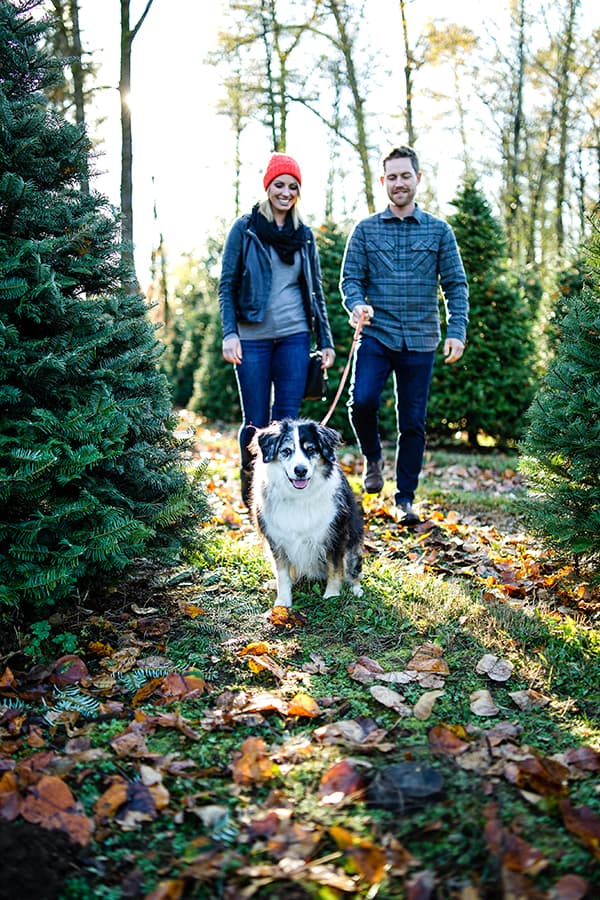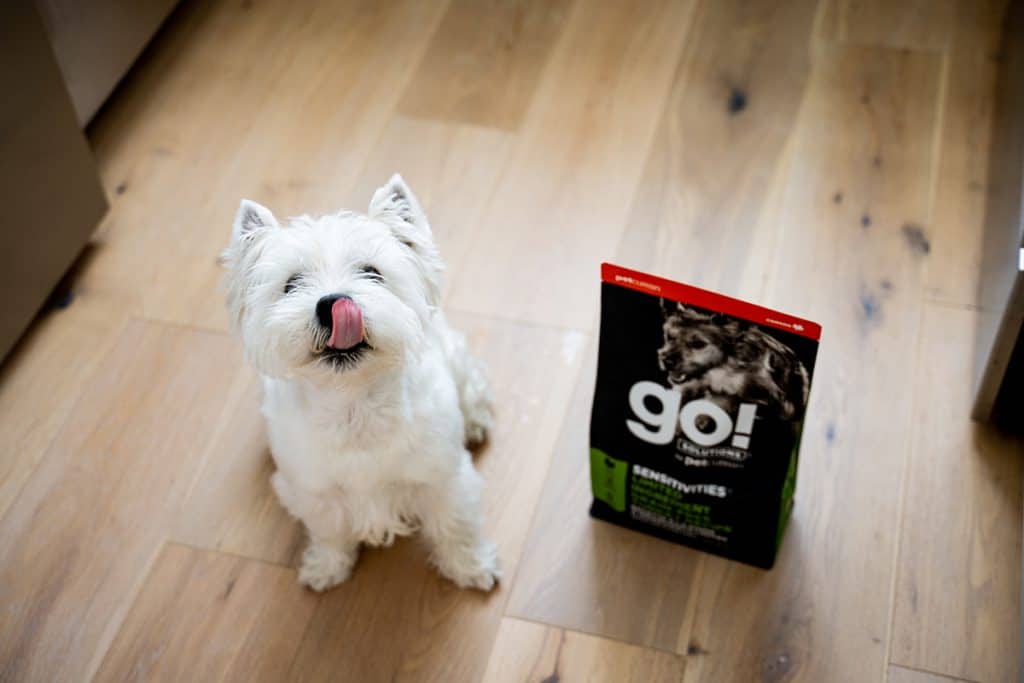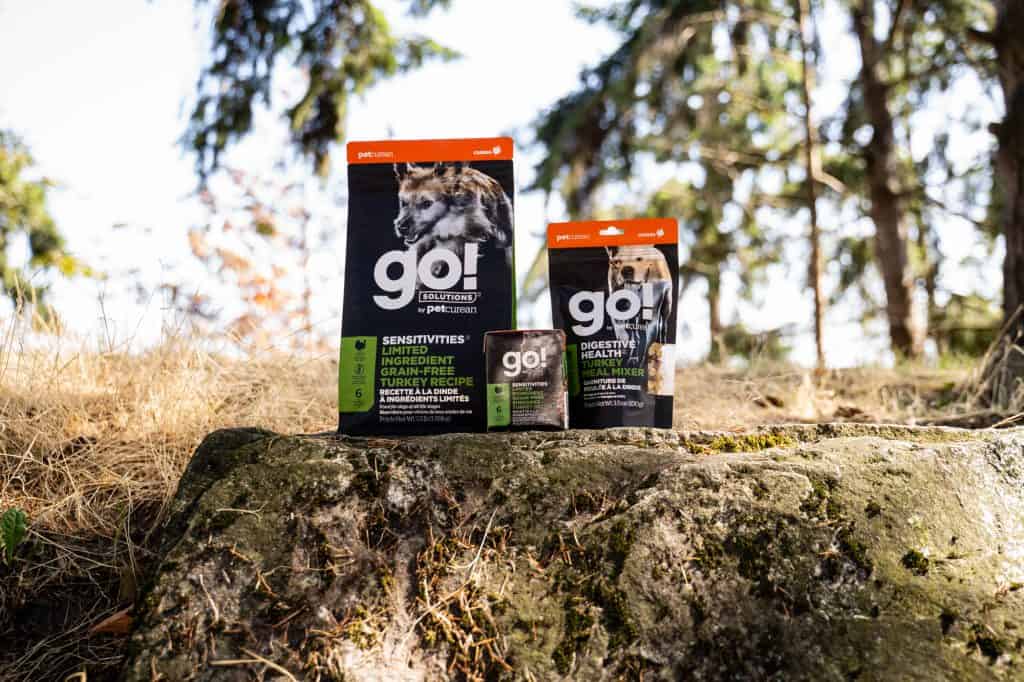“This post contains affiliate links, and I will be compensated if you make a purchase after clicking on my links.”
How to identify potential allergens or intolerances, and make a big difference to the wellbeing of your dog.
By: Natalie Asaro, MSc, Petcurean Nutrition Team
Learn more about Petcurean’s GO! SOLUTIONS SENSITIVITIES collection and download a coupon here.
Does your dog have itchy skin, or experience chronic coughing, vomiting, diarrhea or paw licking? If so, it could be the sign of a food allergy or intolerance.

While it’s true that most allergies are related to environmental factors like pollen, or pesky pests like fleas or ticks, it’s estimated that less than 10% of allergies in dogs are diet-related. When you consider that more North American homes than ever include at least one dog as part of the family, it becomes clear there are lots of dogs out there who may be struggling with a food allergy or intolerance.
So, this holiday season, consider taking steps to help your dog who might be struggling with a food allergy or intolerance. Trust us, they’ll love you even more than they already do!
So, what’s the difference between an allergy and an intolerance?
It can be a bit confusing, since both allergies and intolerances can cause undesirable symptoms. Food allergies occur when the immune system reacts aggressively to a food that’s been consumed, while food intolerances are more common and occur without immune system involvement.

The digestive system is a complex series of organs that not only digests and absorbs food, but also plays a key role in immune function by defending against foreign invaders that cause illness. The immune system must act quickly and aggressively to protect against potentially harmful substances, but also know when to remain unresponsive to good things.
In the case of a food allergy, the immune system mistakenly identifies a food as harmful instead of nourishing, and fires into action. This is why the body can have such a strong reaction when an allergen is detected, causing symptoms like chronic ear infections, coughing, vomiting, fur loss, itchy skin, rashes, and excessive paw licking or paw chewing.
The symptoms of food intolerance are often quite similar to food allergies, and while they are usually less severe, they can still make life pretty uncomfortable!
How can you figure out what foods are causing your dog grief?
Most food allergens are proteins, and the number of different proteins, their sources, and whether your pet has been previously exposed to the protein are factors to consider.
The length of time a pet has been on a food does not seem to affect the risk of developing adverse food reactions. A pet can react to a food after just one feeding, or after many months on the same food.
Blood and skin-patch testing are available for a variety of potential food allergens, however, they don’t always provide a clear answer since many food ingredients can show a false positive or incorrect result. That’s why getting your dog started on a limited ingredient diet can be a great option.
A limited ingredient diet offers a single source of protein with as few additional ingredients as possible, while still meeting the nutritional requirements of your dog. A novel ingredient is one that is not commonly used in pet foods and not commonly associated with adverse food reactions. An example includes the MSC certified Pollock used in Petcurean’s GO! SOLUTIONS SENSITIVITIES collection.

For carbohydrates, ingredient options include tapioca and pulses such as peas, lentils and garbanzo beans (chickpeas). Since fats and oils do not contain protein, the fat source in the diet is not usually considered a concern.
Once your dog has fully transitioned over to their limited ingredient diet (remember this should be done slowly over 8-10 days), it’s important to ensure that they eat nothing but that recipe for 8-12 weeks – no treats or table scraps, and nothing besides water to drink. The process simply won’t work otherwise.
If all the negative symptoms your pet had been experiencing are gone by 12 weeks, your job may be done. You may notice an improvement right away, but it’s important to stay the course.
But if their symptoms don’t go away, you will need to switch to another recipe for another 8-12 weeks. Repeat this process as many times as possible until you identify the protein or proteins your dog thrives on, and then make sure to avoid the ones you know to cause problems. To help make these transitions seamless as possible, all of the recipes in Petcurean’s GO! SOLUTIONS SENSITIVITIES collection are made with the same base recipe, but contain different protein sources. This makes it possible to switch from one recipe to another with little to no transition period, depending on the sensitivity of your dog to new foods. This can help speed up the process when seeking to identify the sources of food allergens or adverse reactions.

In some cases, severe allergies may require a hydrolyzed protein diet, where the protein undergoes a process to break it down into smaller sizes that are less likely to cause a reaction. You can get this type of diet from your veterinarian. Another option might be a home-cooked elimination diet; however, this is usually only necessary in extreme cases and you need to be careful to ensure that your dog is still getting all of the necessary nutrients. Be sure to consult your vet if this is something you are considering.
Once you get things figured out, be vigilant.
When things are going well for your pet, it can sometimes seem OK to give them a treat that deviates from their normal diet. This can be especially tempting during the holiday season, when there are so many delicious meals and snacks being served to family and friends.
But just like the parent of a child with peanut allergies must be strict, so too must pet parents when their dog is prone to allergens or intolerances.
Keep your dog away from anything unusual, and make sure guests visiting you over the holidays understand they need to do the same. It can only take one bite of an allergen to throw things off track and the consequence are just not worth it..
This holiday season, be the hero your dog deserves. By doing the work with your furry family members to identify and avoid potential foods that cause adverse reactions, you can make their life much more comfortable day to day, and keep them happy and healthy for the rest of their lives.
Happy Holidays!
Learn more about Petcurean’s GO! SOLUTIONS SENSITIVITIES collection and download a coupon here.






















